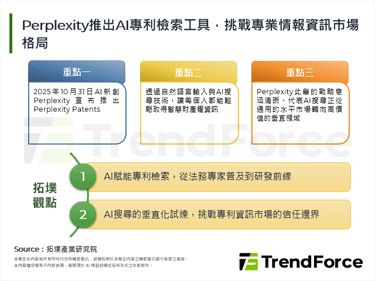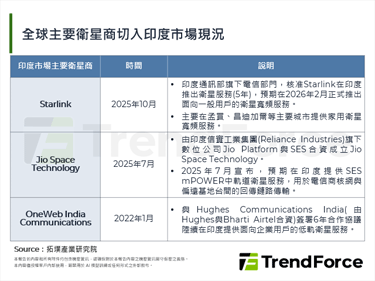Stimulation by Domestic Demand and Policy Driving, Chinese ICT Industry will take Big Strides in 2010

According to Topology Research Institute’s just-released, 10 Projections for Chinese ICT Industry in 2010, Chinese ICT industry will see production value and market demand growth of 7.8% and 12.4% YoY, signalling short supply. At the core of the ICT industry, semiconductor will enjoy especially solid recovery in demand, with revenues expected to rise by 11.8% YoY. Eric Chang, President of Topology Research Institute Shanghai, indicates that China’s semiconductor industry will reclaim its old glory in 2010, when momentum will come from end-market demand for such three consumer electronic products as NB, handset, and LCD TV to help keep semiconductor production value and revenues growth in the positive territory. LCD TV production value, in particular, will grow by 15.9% YoY, a remarkable feat as 2010 will be the third consecutive year of double-digit growth.
Three main consumer electronic products converge to set off race to grab China’s domestic market
According to Topology Research Institute indicates that NB as the output value leader in China’s ICT Industry should see its production value rise from US$62bn in 2009 to US$65.8bn in 2010, up 6.1% YoY. At a time when NB increasingly replaces DT and domestic demand continues to be stirred up by stimulus policies, NB shipments should keep surging to result in revenues growth of 9.1% YoY in 2010, when Topology Research Institute forecasts Chinese NB market to feature demand of up to 16.6mn units, up 24.8% YoY.
Handset, as the unit shipment leader in Chinese ICT industry, should usher in a new year when knock-off “bandit”cell phones will keep up with growth, 3G system deployment will complete, and 3G handsets will become more accessible price-wise to boost handset shipments to 250mn units and handset sales to Rmb192.5bn, up 4.4% YoY. As for the closely-watched smartphone sector, Topology Research Institute further analyzes that benefiting from active participation of such vendors as Apple (iPhone), Ophone, MTK, and Hisilicon, Chinese smartphone demand will go on fast-track growth to account for 26% of overall handset demand (65mn units) in 2010.
LCD TV, lastly, will continue to ride on replacement demand in 2010, when LCD TV sales should grow 34.4% to 28.1mn units to account for 18% of the world’s LCD TV shipments. The sheer size of Chinese LCD TV market not only ensures demand for large-size panels in China but also acts as a bedrock on which LED TV can thrive. Topology Research Institute (TRI) points out that Hisense, Chang Hong, TCL, Konka, and other Chinese TV makers have all delved into R&D and manufacturing of LED TV sets, cooperating with Taiwanese players in the LED supply chain. TRI are upbeat about the prospects of LED TV as the the collaborated R&D effort are trusted to bear fruit.

Endowed with policy support, LED, solar power, and electric car turn heads
For an overview of China’s ICT industry in year 2010, we will continue to see subsidies to rural consumption of household appliances and cars and other stimuli that are geared toward domestic demand at work, while energy conservation, carbon reduction policies, and new market applications will groom LED industry into an exponentially-growing star business. It is estimated that in 2010, China’s LED industry will ride on speedy spread of LED application to NB, LCD TV, and the likes to reap much-increased demand for LED dies and for packaging services. To be exact, the LED application market will be worth US$17.6bn in 2010, up 64% YoY.
Faced with a solar power market that is gradually lifting off, China is dishing out supportive policies to ensure fast-track growth of Chinese solar power market. The on-grid electricity tariff law scheduled to be promulgated in late 2009 or early 2010, as one, stands out because it requires that power grid company should procure solar electrity at preferential prices for over 20 years so as to guarantee proceeds for solar power enterprises and to prod solar power market growth. In addition, polysilicon price has continued to tread lower of late, causing solar cell price to tank. These two, coupled with other subsidized projects like “Application of Building-mounted Solar Photovoltaic Financial Assistance Fund Management Interim Measures” and “Golden Sun” policy, have rendered subsidized solar-power electricity costs as low as to be comparable to coal-fired power prices. As such, Topology Research Institute forecasts that in 2010, China’s solar power electricity market will be worth US$620mn, up 138.5% YoY to signal solid potential.
Meanwhile, it’s beyond dispute that China’s automobile market is fast emerging as something as huge as North America. In 2009, China put on wheels such policies as halving of consumption tax, subsidizing rural car buying, and replacement allowance to put automotive electronics market growth in higher gear. In 2010, it’s estimated that automotive electronics market will be worth US$29.3bn, up 35% YoY. Besides, national standards for electric cars should be made public toward the end of 2009 to the ecstacy of anxious electric car vendors. It’s generally expected that upon unveiling of the subsidy program in detail, electric car will become talk of the town across China.






